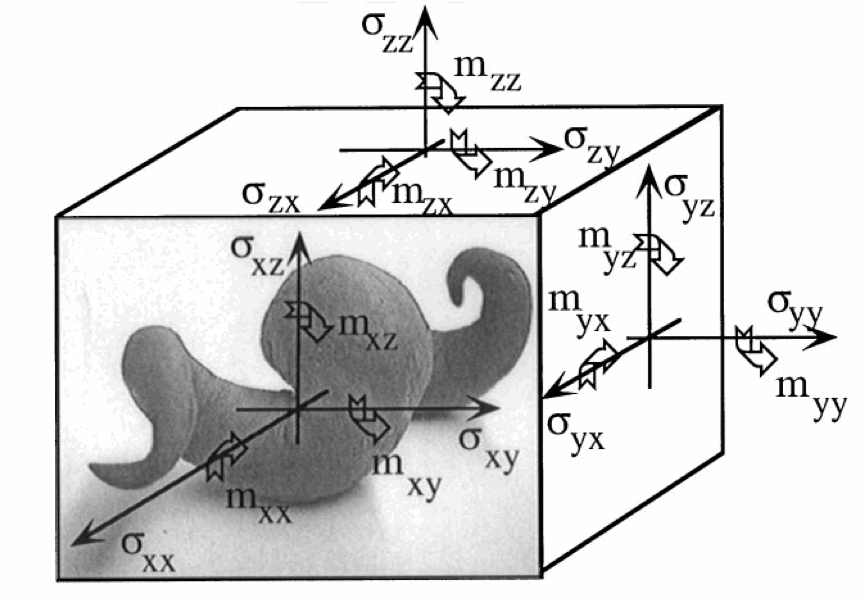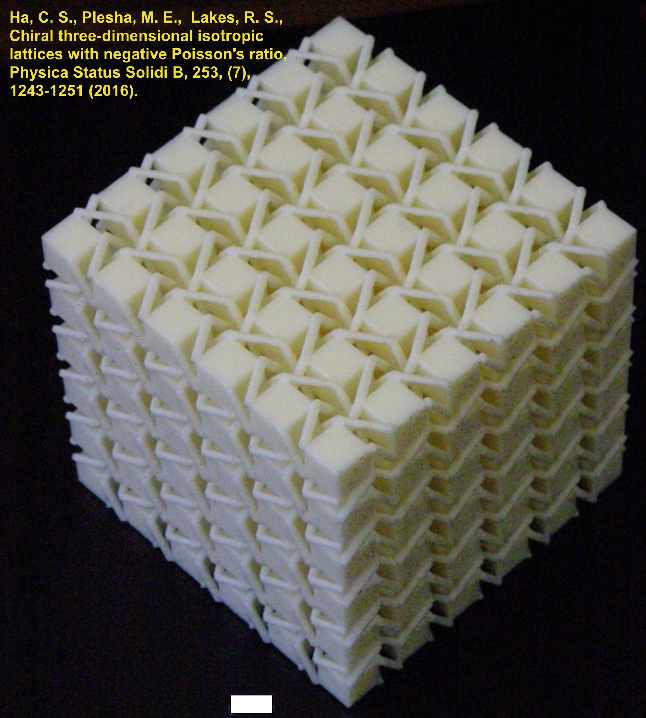



 Ha, C. S., Plesha, M. E., Lakes, R. S., Chiral three-dimensional isotropic lattices with negative Poisson's ratio, Physica Status Solidi B, 253, (7), 1243-1251 (2016).
DOI: 10.1002/pssb.201600055
Ha, C. S., Plesha, M. E., Lakes, R. S., Chiral three-dimensional isotropic lattices with negative Poisson's ratio, Physica Status Solidi B, 253, (7), 1243-1251 (2016).
DOI: 10.1002/pssb.201600055
abstract Bounds on properties are useful in guiding design of heterogeneous materials and in understanding the distinction between effects that are physically reasonable and those that are not. Several bounds on physical properties can be exceeded by an appropriate choice of material. The reason is that the proofs of bounds contain either unstated assumptions about the material or assumptions that are couched in language that appears to be that of incontrovertible mathematics but that actually entails assumptions about the material. If those assumptions are relaxed, limits or bounds can be exceeded, as is demonstrated by analysis and experiments. For example, heat capacity, compressibility, electrical capacitance, and refractive index can be negative. Thermal expansion in composites can be larger or smaller than that of any constituent and can be negative. Materials and systems are known that are non-Hermitian or nonreciprocal. Currently, active fields of endeavor have arisen from such conceptual sources. Research efforts have led to the development of new materials and new classes of materials.